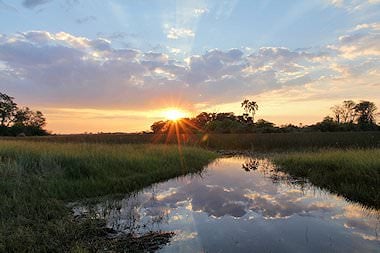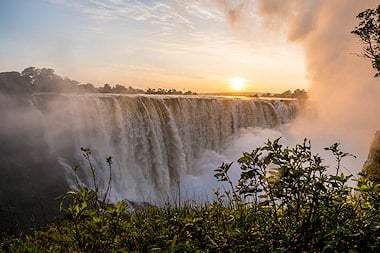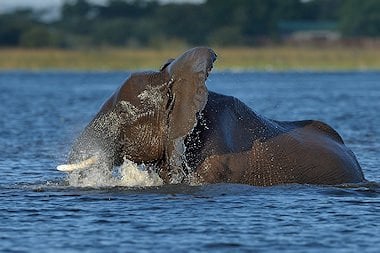Chobe National Park Safaris
Chobe National Park is one of Botswana's top safari destinations. We combine this wilderness area into packages that visit other highlights in Southern Africa. Some packages also focus exclusively on Chobe or on connecting Chobe with Botswana's other safari areas or Victoria Falls.
- Home
- >>
- African Safari
- >>
- Botswana Safaris
- >>
- Chobe National Park
Recommended Trips
Chobe is the capital of the Elephant world, a longstanding refuge for great biodiversity and a prime destination when considering the best places to go on a safari.
Two and a half weeks devoted to visiting the best safari areas and top travel destinations in Southern Africa. A luxurious adventure.
Visit the two most popular safari areas in Botswana in combination with Victoria Falls, as seen from the Zambian side of the Zambezi River.
This package visits two areas in the Chobe National Park, with an unforgettable stay in the Okavango Delta.
Reasons to Visit
Home of the Elephants
No other African national park offers a better opportunity to view the mightiest African mammals. Here you will see vast herds of elephants daily, and you will have the chance to gain a first-hand understanding of the complex social behavior in family herds, as well as the struggle for survival all animals face in this harsh, beautiful land.
One of Africa's wildest Frontiers
The northern reaches of Chobe, though not overcrowded, attract several visitors annually. Once, however, you travel further south to the Savute section of the park, one of Africa's wildest frontiers - which genuinely seems to stretch into eternity - can be experienced. Here, only a handful of people at any given time can relish a truly remote safari experience in an area that covers thousands of square miles.
Water-Based Game Viewing
Chobe and the Okavango Delta are two of Africa's most sought-after safari areas that offer game viewing on land or from water. Game viewing is especially rewarding in the early morning and late afternoon when many species come to the water's edge for a drink. River banks also attract birds in great numbers, which enriches the safari experience.
Unique Species
Species of antelope indigenous to Chobe, not seen in the national parks of South Africa or Namibia, include the puku, lechwe, and the regionally rare sitatunga. The rare sable antelope and roan antelope occur in substantial numbers in the northern part of Botswana.
Experiences to be Savored when traveling to Chobe
The Chobe National Park's enrapturing experiences are primarily based around the Chobe River and taking advantage of its wild spoils. From leisurely sunset cruises to observing herds coming down to the water's edge for a drink, you'll find each occasion indelibly memorable.
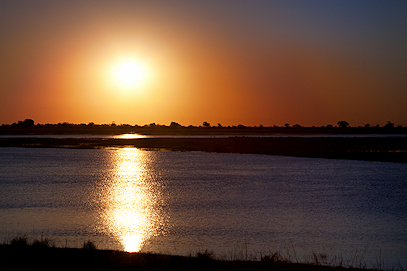
Sunset over the Chobe River
Enjoying a spectacular sunset over the Chobe River while nursing a drink of your choice with the cry of fish eagles and the snorting of hippos providing the background sounds to a most remarkable display is a moment in time you are not likely to forget.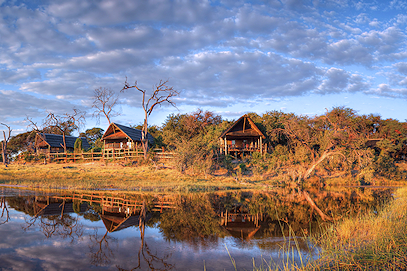
Remote isolation of Savute
The Savute region in the south-central part of the Chobe National Park offers a sense of remote isolation rarely experienced in the modern world. A feeling of being part of this vast wilderness and the multitude of creatures, great and small, that inhabit it.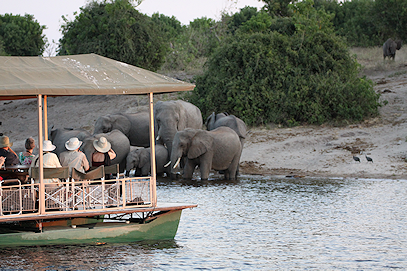
Observing elephants at the water's edge
Witnessing a large herd of elephants with youngsters approaching the water's edge, drinking and splashing about with calves, often playful and amusing, is a wonderful experience from the safety of a boat just meters away.The Okavango is the pinnacle of safari destinations, gathering millions of animals and birds for a seasonal feast in the north of Botswana. Great herds migrate from far and wide to the delta as the desert shrubs give way to marshlands. The lodges in the Okavango Delta are among the most exclusive in the world, with only a handful of guests and only the best locations, with every comfort catered for.
Elephants, Buffalo, lions, wild dogs, and many other large game and antelope species gather in large numbers and are sure sightings on a game drive. Fish Eagles and Kingfishers line the many meandering streams flowing through the open patches in the delta, waiting to cement a catch. Storks wade through the reeds, among them the critically endangered watt. The park is known for its incredible biodiversity, plentiful safari lodges, and second-to-none elephant population. These gentle giants number over 50,000, with double that amount arriving in the wet season as they migrate to the region.
The park consists of three central safari regions: the Chobe Riverfront in the north, the Savute Marsh, and the Linyanti Marsh. The area is one of the wettest in Botswana and supports a high density of animals year-round. The Chobe River, a tributary that later makes its way to the gushing waters of the Zambezi, passes along the north of the park, bringing much-needed nutrients from the Cuando River Basin that feeds the river system in the Angolan Highlands.
The Chobe Riverfront hosts large numbers of elephants, Buffalo, giraffes, and various antelope species, including the rare Puku and Sable Antelope. Most travelers to the park visit this section, and there are several lodges and camps to choose from here. Elephant breeding season is on full display here between May and October.
The Savute and Linyanti Marshlands to the west are a curious tale. The Savute Marsh is fed by underground water that sporadically flows. For about 30 years from 1982, the channels that fed the marsh were dry, and the marsh was filled with the remains of dead trees as a result of this odd behavior. Lechwe, Sitatunga, and Common Eland are some of the rarer antelope that are common here, as are both African species of rhino and a host of other mammal and bird species.

